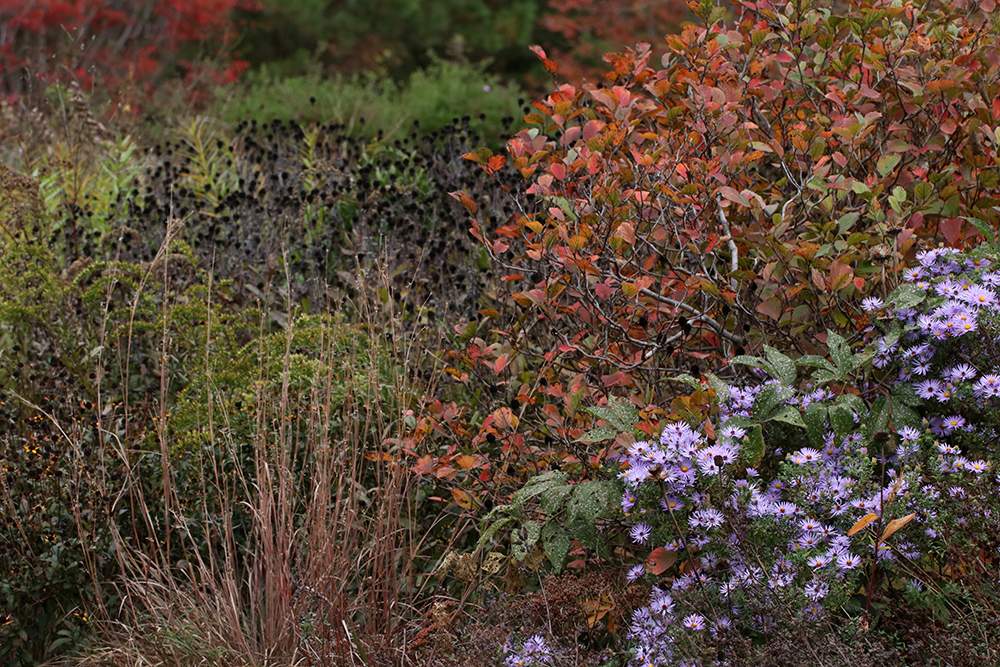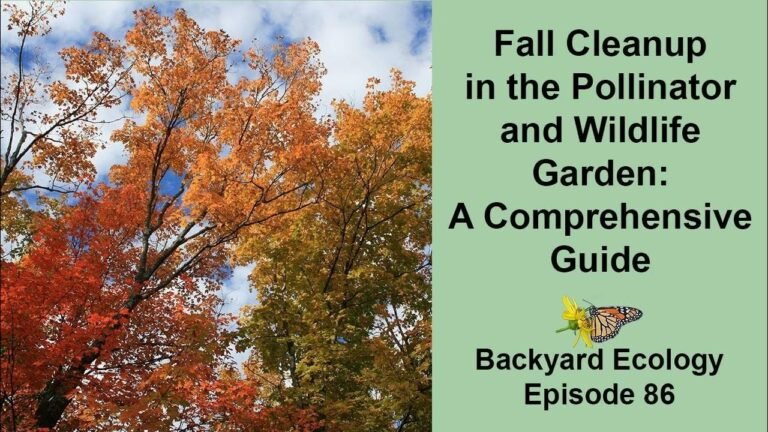As the leaves turn and the air chills, pollinators need a place to stay warm. Many people forget that these tiny creatures require shelter through the cold months.
As fall approaches, it’s essential to think about how to support these vital members of our ecosystem. Pollinators such as bees, butterflies, and other insects play a crucial role in the health of our environment. They help plants to grow, breed, and produce food.
During winter, they need safe havens to survive the harsh conditions. Creating a winter shelter for pollinators can be a simple, yet impactful way to contribute to the well-being of your local ecosystem. By preparing in the fall, you give these insects a head start against the cold. This guide will show you the steps to build a snug refuge for pollinators using materials you may already have. You’ll learn how to select the right location, what structures work best, and which materials can withstand the winter. Let’s get ready to give pollinators a helping hand before winter sets in.
The Importance Of Pollinators During Winter
Pollinators are crucial for healthy ecosystems. They help in plant reproduction and contribute to biodiversity. Their role extends into winter, where they still require shelter for survival. Creating winter shelters for them is vital.
Role Of Pollinators In Ecosystems
Pollinators like bees, butterflies, and birds keep plants growing. They move pollen, helping plants to fruit and seed. This leads to diverse plant life, which supports other wildlife and maintains balance in nature.
Challenges Pollinators Face In Cold Months
In winter, pollinators face harsh conditions. Food scarcity and freezing temperatures threaten their survival. Suitable shelters can protect them from the cold and provide safe spots for hibernation.
- Food Scarcity: Fewer flowers bloom, reducing nectar and pollen sources.
- Harsh Weather: Snow, ice, and rain can destroy pollinator habitats.
- Short Days: Less daylight limits the time pollinators can forage.
Assessing Your Garden For Pollinator-friendly Features
Assessing Your Garden for Pollinator-Friendly Features starts with understanding what pollinators need. As the days grow shorter and the temperature drops, creating a winter shelter for these vital creatures becomes crucial. Let’s explore how to make your garden a haven for pollinators even in the colder months.
Existing Plant Selection
Begin by surveying the plants in your garden. Look for those that offer late-season blooms and seeds. Plants like sunflowers, asters, and goldenrods are excellent sources of food for pollinators. Ensure a variety of plants to support different species. Keep some plants standing. Their hollow stems and seed heads offer shelter and food.
Natural Shelters And Hideouts
Next, identify natural areas that can serve as shelters. Piles of leaves, dead wood, and brush can protect pollinators from cold. Leave some soil undisturbed for ground-nesting bees. Consider adding a bug hotel to invite beneficial insects. Secure it against winter winds for safety.
- Leaf piles: Provide insulation and hiding spots.
- Dead wood: Serves as nesting sites for certain bee species.
- Brush piles: Offer protection from predators and elements.
Choosing The Right Location For Winter Shelters
Creating winter shelters for pollinators is crucial. The right location is key. It ensures they stay safe and warm. Let’s discuss how to choose the best spot.
Sunny Spots Protection
Pollinators need warmth. Choose sunny spots for their shelters. These areas get more daylight. It helps keep the shelter warm. Avoid places where shadows fall for most of the day. Instead, look for areas that get direct sunlight.
Windbreaks And Insulation
Wind can make winter cold worse. Use natural windbreaks. Trees and walls can block the wind. This keeps the shelter warmer. Also, add insulation. Dry leaves or straw work well. They keep the inside cozy.
- Find a sunny location – It keeps the shelter warm.
- Use natural windbreaks – Trees and walls help.
- Add insulation – Leaves or straw keep it cozy.

Materials To Use For Constructing Pollinator Shelters
Creating a winter shelter for pollinators is a kind gesture for our tiny friends. The right materials make all the difference. They provide safety and warmth for bees, butterflies, and other insects. Let’s explore the best materials to use for these shelters.
Natural And Recycled Materials
Nature offers the best resources to build pollinator shelters. Recycled materials are also great. Here are some top choices:
- Twigs and branches for structure
- Hollow stems from plants for hiding spots
- Untreated wood for durability
- Old logs with crevices for nooks
- Cardboard tubes mimic tunnels
- Straw or dead leaves for bedding
Insulation For Warmth
Keeping pollinators warm is key. Insulation matters. Here’s what works well:
- Moss or wool scraps trap heat
- Dry leaves offer a blanket
- Pine needles keep out cold
Layer these inside your shelter. They help pollinators stay toasty.
Choose wisely, build with care, and help pollinators survive the winter.
Design Ideas For Pollinator Shelters
As cooler months approach, providing a safe haven for pollinators is vital. Here are practical shelter designs to support these beneficial insects during winter.
Bee Hotels and HibernaculaBee Hotels And Hibernacula
Bee hotels offer solitary bees cozy nesting spots. Bees like mason and leafcutter use these spaces to lay eggs and hibernate. A well-designed bee hotel features:
- Untreated wood to avoid chemicals
- Bamboo tubes for nesting
- Various hole sizes to attract different species
Hibernacula, or overwintering sites, give ground-dwelling bees a place to rest. Build these by:
- Piling up stones and dead wood
- Ensuring adequate drainage to prevent flooding
- Adding soil mounds for digging bees
Butterfly Boxes And Overwintering Sites
Butterflies need safe spots to overwinter. Butterfly boxes mimic the shelter of tree bark or fallen leaves. A successful butterfly box should:
- Have slits for entry
- Include bark or leaves inside
- Be placed in a sheltered location
Create overwintering sites in gardens by:
- Leaving leaf litter undisturbed
- Allowing grass to grow long
- Planting native shrubs for cover

Plant Choices To Support Wintering Pollinators
Plant Choices to Support Wintering Pollinators are crucial for their survival. These choices offer shelter and food through cold months. Let’s explore the best plant options.
Evergreen Plants And Flowers
Evergreens keep leaves all year. They provide perfect shelter. Consider these:
- Pine trees – Safe homes for bees.
- Boxwood – Dense leaves protect from wind.
- Rhododendron – Offers food and cover.
Seed Heads And Berries
Seeds and berries feed pollinators in winter. Here are top picks:
- Coneflower – Seeds last into winter.
- Black-eyed Susan – Attracts birds and insects.
- Juniper berries – Provide food for birds.
| Plant Type | Benefit |
|---|---|
| Evergreens | Year-round shelter |
| Seed Heads | Food source |
| Berries | Winter nourishment |
These simple steps can make a big difference. Start this fall. Help pollinators thrive through winter.
Maintaining The Shelter Throughout The Season
As leaves fall and the air chills, preparing a winter shelter for pollinators is critical. Their survival depends on the conditions we create and maintain. Let’s explore how to keep these sanctuaries safe and sound throughout the cold months.
Care for your winter pollinator shelter is ongoing. Regular checks ensure its integrity and functionality. Here’s what you need to keep in mind:
Periodic Checks And Repairs
Weather can damage shelters. Inspect the structure often. Look for cracks, leaks, or other harm. Fix issues quickly to prevent bigger problems.
- Check the roof for water resistance.
- Ensure walls and foundations remain sturdy.
- Replace or repair damaged parts immediately.
Protection From Predators
Predators pose a threat to pollinators. Secure shelters against them. Make barriers to keep predators out. Here’s how:
- Use mesh or wire to cover openings.
- Place shelters off the ground if possible.
- Check for signs of digging or intrusion.
Remember, a little effort goes a long way. Keep your pollinator friends safe and they’ll thank you come spring.

Engaging Community In Pollinator Conservation
Engaging Community in Pollinator Conservation is key to creating winter shelters for pollinators. People of all ages can join in to help these vital creatures. Together, we can make a big difference. Let’s explore how to involve everyone in this important cause.
Educational Workshops And Events
Learning is the first step to helping. Communities can host workshops. These events teach about pollinator needs. They show how to build shelters. Schools, libraries, and local gardens are great places for these events. Hands-on activities make learning fun and easy.
- Plan a ‘Build a Bee Hotel’ day
- Offer a ‘Planting for Pollinators’ class
- Invite experts to speak at ‘Pollinator Protection’ talks
Collaborative Gardening Efforts
Gardens are great for pollinators. They provide food and shelter. Community gardens can add pollinator-friendly plants. Everyone can work together. This helps pollinators and brings people closer. It’s a win-win!
- Choose the right plants for your region
- Set up a community planting day
- Create signs to educate visitors about the garden’s purpose
Frequently Asked Questions
What Is A Winter Shelter For Pollinators?
A winter shelter for pollinators is a safe space created to protect bees, butterflies, and other pollinating insects during cold months. It provides them with a habitat that shields them from harsh winter conditions, helping ensure their survival and the health of ecosystems.
How To Build A Pollinator Winter Shelter?
To build a pollinator winter shelter, gather natural materials like leaves, twigs, and pine cones. Construct a sheltered structure in a quiet, undisturbed area of your garden. Ensure it’s dry and protected from wind, offering pollinators a cozy winter refuge.
Why Is Fall The Best Time To Create Pollinator Shelters?
Fall is the optimal time because it allows you to set up the shelter before winter sets in, giving pollinators time to find and use it. It also utilizes fallen natural materials, making the process eco-friendly and efficient.
What Materials Are Best For Creating Pollinator Shelters?
The best materials are those that mimic natural habitats: dry leaves, twigs, hollow stems, and bark pieces. These materials provide insulation and hiding spots, closely resembling the environment pollinators naturally seek out for wintering.
Conclusion
Creating a winter haven for pollinators is easy and rewarding. Remember, every small effort helps. Gather natural materials this fall. Build shelters that keep pollinators safe and warm. Your garden will buzz with life come spring. Start today and make a difference for these vital creatures.
Your actions ensure a healthier ecosystem. Let’s give back to nature and protect our pollinator friends. Together, we can make our gardens a sanctuary for them, even in the coldest months.



